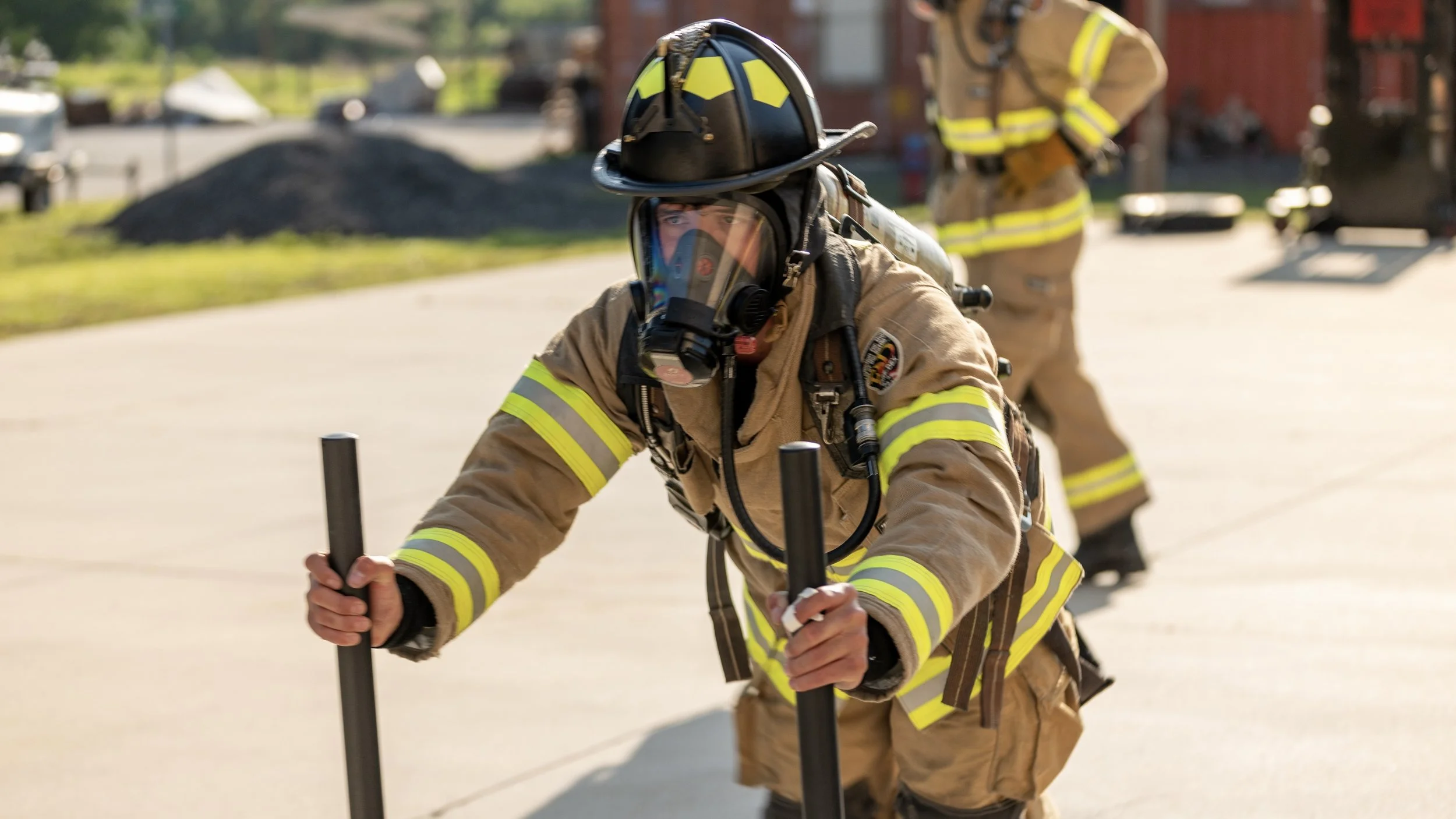Balancing Stress and Performance: The Role of Allostatic and Total Training Load
By Ryan Provencher
The physical, mental, and emotional demands of firefighters are often high. To maintain health and well-being throughout our careers, we must be mindful of the stress we experience day to day.
There are two key types of stress loads that firefighters encounter at different stages of their careers: Allostatic Load and Total Training Load. Understanding and managing these stressors is essential to optimizing performance and minimizing the risk of injury, burnout, or long-term health issues. Let’s take a deeper look at each concept and how they impact firefighters in Recruit Academy, Operations, and Administration.
Allostatic Load
Wikipedia defines “Allostatic Load” as the wear and tear on the body that accumulates as an individual is exposed to repeated or chronic stress. High allostatic load is associated with an increased risk of various physical and mental health problems, including cardiovascular disease, depression, and immune dysfunction.
Allostatic Load in Firefighting
Recruit Academy: Allostatic load during this phase is primarily driven by the physical demands of occupational training and the mental demands of academic study. Recruits often face pressure to perform at a high level while learning new skills, adapting to a regimented environment, and managing personal expectations.
Operations: For active-duty firefighters, the primary contributors to allostatic load are sleep deprivation, trauma from emergency responses, and the cumulative stress of shift work. Chronic sleep loss and exposure to tragic events can significantly increase physical and emotional strain, often without immediate recognition of the long-term consequences.
Administration: Allostatic load in administrative roles often stems from mental and emotional stressors, such as managing budget constraints, dealing with resource limitations, and working long hours. While these roles may seem less physically demanding, the cumulative stress can still have significant health impacts.
Strategies to Reduce Allostatic Load
Reducing allostatic load requires a proactive and multifaceted approach:
Stress Management Techniques: Incorporate mindfulness, meditation, or breathing exercises to regulate stress.
Adequate Sleep: Prioritize sleep hygiene by creating a consistent sleep routine, even with shift work challenges.
Balanced Nutrition: Fuel your body with nutrient-dense foods to enhance resilience.
Proper Hydration: Stay hydrated to support optimal physical and cognitive function.
Physical Activity: Engage in regular exercise tailored to your role and fitness level.
Social Support: Lean on your family, friends, and firefighter community for connection and encouragement.
Proactive Mental Health: Seek professional support when needed and remove stigma around mental health care.
Work-Life Balance: Set boundaries to ensure personal time and recovery away from work.
Total Training Load
Total Training Load is a concept from sports and exercise science that quantifies the stress of physical activity. It contributes to allostatic load but deserves special attention due to its direct impact on performance, recovery, and injury prevention.
Calculating Total Training Load
A simple way to estimate training load is to multiply the intensity of any activity (using a rating of perceived exertion on a scale of 1 to 10) by the duration of the activity (in hours). For example, a 1-hour workout with an intensity of 7 would result in a total training load of 7 units.
Total Training Load in Firefighting
Recruit Academy: The total training load is typically high due to the physical demands of occupational training, such as drills, hose work, and physical fitness sessions. Recruit Academy programs must carefully balance intensity to build resilience without causing overtraining or injuries.
Operations: Total training load varies based on call volume, incident demands, and scheduled workouts. Firefighters must balance the physical demands of emergency responses with their fitness training. Workouts should prioritize progress while allowing flexibility to accommodate the unpredictable nature of shift work.
Administration: In administrative roles, total training load is often low due to the sedentary nature of the work. It’s essential to counteract prolonged sitting by participating in a comprehensive physical training program, incorporating frequent movement breaks and maintaining mobility.
Optimizing Total Training Load
To effectively manage training load:
Track and Adjust: Monitor your training intensity and duration over time. Adjust your program to match your physical capacity and workload.
Periodize Workouts: Use a structured training plan that incorporates phases of higher and lower intensity to promote recovery.
Prioritize Recovery: Integrate rest days, mobility work, and active recovery sessions into your routine.
Listen to Your Body: Pay attention to signs of overtraining, such as persistent fatigue, irritability, or a decline in performance.
Balancing Stress and Performance
Evaluate the specific stressors contributing to your allostatic load and implement strategies to manage them. Likewise, assess your total training load to ensure you’re not overtraining or undertraining. By understanding and addressing these stressors, you can create a sustainable balance between hard work and recovery.
While firefighting is undeniably a high-stress occupation, there is a lot we can do to manage the physical, mental, and emotional demands of the job. Through mindful lifestyle choices and intentional physical training, we can build resilience, optimize performance, and safeguard our health for the future.

